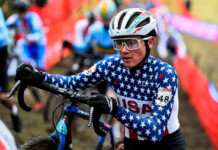The downside of the bicycling boom lies in the parallel boom in bicycling fatalities. While bicycling deaths in the United States had been steadily declining between at least 1975 (when tracking started) and 2010, they have steadily increased since then, according to a study released by the Governors Highway Safety Association (GHSA). Auto insurer State Farm financed the study, entitled A Right to the Road: Understanding & Addressing Bicyclist Safety (https://www.ghsa.org/resources/bicyclist-safety2017).
Between 2010 and 2015, the number of bicyclists killed or mortally wounded on the road or trail steadily increased from 621 to 818, a record high, the report says. About half the deaths occurred in darkness, but since 80 percent of the riding takes place in daytime, nighttime riding presents greater hazards.
A variety of causes are at work. “Bicycle-motor vehicle crashes are often the result of the motorist failing to notice the bicyclist. Riders, on the other hand, are more likely to see the vehicle and expect the driver to give way. When they do not, bicyclists often cannot stop in time to avoid a crash,” GHSA states. Also 22 percent of cyclists and 12 percent of drivers were legally defined as drunk. More than half of killed cyclists weren’t wearing helmets.
The report also faults a change in federal law that prohibits states from using highway infrastructure money for bicycle safety education. It advises states and communities to better track crash data to see who is getting hurt and killed (males outnumbered females in deaths six to one, for instance, a ratio far greater than the percentage of male riders).
Some law enforcement agencies are taking creative steps to address the problems. The Utah Department of Public Safety and police in Las Vegas and Fort Collins Colo., for instance, use a 3CFT ultrasonic detector that tracks how close bicycles are to other vehicles and can thus help enforce three-foot passing laws. On the other hand, Utah and Montana specifically exempt bicyclists from drunk driving laws. In most other states, the law remains unclear as to whether cyclists can be cited for riding under the influence.
Laws are also unclear about electric bicycles. Only four states (including Utah) define them as bicycles. Only three states, including Nevada, have assessed their bicyclist and pedestrian safety programs based on federal guidelines.







I’ll make an quick observation – WFRC – The valley’s funding arm – Wasatch Choice 2050 talks a lot about providing mobility options to Utahns, from AT (active transportation) to transit. Yet, it projects that in the next 30 years for every dollar spent in these alternative modes of transportation we will spend 3 dollars to improve car connectivity. From these 4 dollars, only about 8 cents (2.1%) will be used to make improvements to pedestrian and cycling facilities (trails, bike lanes and sidewalks). This is, sadly, an improvement from what we have actually done in the past – but if we are really serious about tackling air quality, congestion, sprawl, water scarcity, and a long list of health issues attributed to over-reliance of car use we need to flip this type of investment pattern.
https://wfrc.org/vision-plans/regional-transportation-plan/2019-2050-regional-transportation-plan/
Additionally, a little overlooked fact is that during the same time period speeds at arterial and collector streets have creeped up, while accommodating systematic safety (vision zero type initiatives) for active transportation users have largely been met with resistance and contempt by professionals, elected officials, and perhaps even the public at large.
Not only cyclists are dying at a faster pace, pedestrian deaths are also on the rise.
https://www.npr.org/…/pedestrian-deaths-reach-highest…
The first step towards a recovery is to incorporate common sense principles – At places where different mix of traffic is expected, we need to reduce the speed of vehicles to speeds at which statistically a 4,ooo pound personal pod is unlikely to kill a person without a car. A bullet cannot kill a person unless it is propelled at speed. Because a bullet cannot kill a person unless it is propelled at killer speeds.
#SlowTheCars
Comments are closed.